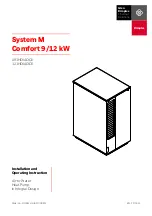
WARNING
WARNING
WARNING
EQUIPMENT
EQUIPMENT
EQUIPMENT MISUSE
MISUSE
MISUSE HAZARD
HAZARD
HAZARD
Misuse can cause death or serious injury.
• Do not operate the unit when fatigued or under the influence of drugs or alcohol.
• Do not exceed the maximum working pressure or temperature rating of the lowest rated
system component. See Technical
Technical
Technical Data
Data
Data in all equipment manuals.
• Use fluids and solvents that are compatible with equipment wetted parts. See Technical
Technical
Technical Data
Data
Data
in all equipment manuals. Read fluid and solvent manufacturer’s warnings. For complete
information about your material, request MSDS from distributor or retailer.
• Do not leave the work area while equipment is energized or under pressure.
• Turn off all equipment and follow the Pressure
Pressure
Pressure Relief
Relief
Relief Procedure
Procedure
Procedure when equipment is not in use.
• Check equipment daily. Repair or replace worn or damaged parts immediately with genuine
manufacturer’s replacement parts only.
• Do not alter or modify equipment. Alterations or modifications may void agency approvals
and create safety hazards.
• Make sure all equipment is rated and approved for the environment in which you are using it.
• Use equipment only for its intended purpose. Call your distributor for information.
• Route hoses and cables away from traffic areas, sharp edges, moving parts, and hot surfaces.
• Do not kink or over bend hoses or use hoses to pull equipment.
• Keep children and animals away from work area.
• Comply with all applicable safety regulations.
THERMAL
THERMAL
THERMAL EXPANSION
EXPANSION
EXPANSION HAZARD
HAZARD
HAZARD
Fluids subjected to heat in confined spaces, including hoses, can create a rapid rise in pressure
due to the thermal expansion. Over-pressurization can result in equipment rupture and serious
injury.
• Open a valve to relieve the fluid expansion during heating.
• Replace hoses proactively at regular intervals based on your operating conditions.
PLASTIC
PLASTIC
PLASTIC PARTS
PARTS
PARTS CLEANING
CLEANING
CLEANING SOLVENT
SOLVENT
SOLVENT HAZARD
HAZARD
HAZARD
Many solvents can degrade plastic parts and cause them to fail, which could cause serious
injury or property damage.
• Use only compatible water-based solvents to clean plastic structural or pressure-containing
parts.
• See Technical
Technical
Technical Data
Data
Data in this and all other equipment instruction manuals. Read fluid and
solvent manufacturer’s MSDSs and recommendations.
4
334792G





































